This LEGO SERIOUS PLAY case study has been written by Evgenia Cherkashina and Albina Zalilova from Training&Development Group
Challenge
CLIENT: Kaspersky Lab
TARGET AUDIENCE: Children and teenagers, 8 to 16 year old
PURPOSE: To help children to understand their calling/future
career using modern approach and making the process fun and exciting.
EVENT: “Detki vKLetke”, an event in Kaspersky Lab (global cyber security corporation), dedicated to International Children’s Day. 10+stations with different activities for employees’ kids.
SOLUTION: Lego® Serious Play® methodology + New Careers Atlas
What we did?

Step 1 / Getting Ready
We updated the standard occupational choices matrix, commonly used for teenager career consulting. Essentially, it is a table with careers distributed over table cells, located at intersections of activities and interaction objects.
The problem with the standard matrix is that almost a half of careers in it is completely outdated and uninspiring, like “Industrial training specialist”, “Woodcarver”, “Track walker”, “Fiscal policeman”, “Librarian” etc. We felt that using such careers as guidelines can forever ruin any kid’s learning motivation.
That is why we updated the matrix with new occupations from New Careers Atlas published by ASI (Agency for Strategic Initiatives) and Skolkovo Foundation and removed those that according to their forecasts will cease to exist in next 10 years.
We filled the matrix with careers of the future: space geologist, airship engineer, cross-logistician, eco-visionary, old age well-being manager, city farmer etc.
At this stage, we set out for ourselves that we will focus exclusively on the interest in particular object or occupation. We did not gauge abilities, as, based on our experience in teaching
Step 2 / Scripting
This stage was dedicated to creation of step-by-step script for Lego® Serious Play® process, formulation of The Main Question and questions for each step. The most important in this stage was to articulate questions the way that they could be interesting to our participants at the same time allowing us to identify interests of teenagers and their ideas about their perfect future.
We used two following questions as key turning points of the session:
- “Build a model of your “best ever” day that happened to you”
- How your best day looked like? What did you do? Who was around you? Why it was the best day?
- “Build a model of your perfect day at work that will happen 20 years from now”
- How your perfect day at work will look like? What are you doing? Why this is a perfect day?
The whole discussion and stories were built around these questions.
Step 3 / Session
The most important thing at this stage is to tell the group, honestly and openly, what we plan to do, why we do that and how we will do our job, what is going to be evaluated. This is extremely important when working with younger participants – they can be scared by facilitators, asking many questions, writing notes and observing.
Observations were focused on what participants enjoy doing the most, what attracts them, how they see themselves in the future, what do they represent in models they’ve built and what do they tell about them.
Individually, participants built models of themselves in the present and in the future, and then, assembled in group – a model of the City of the Future. The group could be easily engaged into discussion by a very simple question, asked after listening to the story of the model:
“Share your thoughts on his/her career, what do you think is the best for him/her?”
We must notice that in most cases suggestions were consistent

Step 4 / THE MAIN THING – CHOOSING CAREER
After having fun playing Lego, every participant received his or her “Ticket to the Future”. There facilitators marked one’s favorite activity, which represented itself in models (e.g. research, engineering, managing etc.) and objects in models that participant interacted with (e.g. people, animals, machines) and marked by participant as valuable and interesting. At the end of the session, our young participants were to find career options in the matrix. Kids were active, searching and trying on different career options. They enjoyed the process and raced off to share the news with their parents.
Conclusion
When all was over, our young participants were happy and inspired. Many of them told us that they did not know about such careers and considered them just a part of their dreams before participating in our event. Parents received a roadmap to action – directions for development of their children, knowledge of areas where their kids already want to work, a list of useful skills that are to be developed, where to go to learn the profession and what companies already search for such employees.
Overall, it was a super funny event, with everyone happy. Kids definitely appreciated the ability to choose a career the funny and playful way. And the results, well, they amazed us. It felt like we really managed to look into the future and wonderful “Kaspersky Kids” were our guides on that road.
INSIGHTS
- Children have no blocks and do not fear to look 20 years forward. They joined the process and started building models of themselves in the future without any hesitation. It’s absolutely natural to them – the thing that troubles many adults when they are met with such question.
- Kids younger than 11-12 years old gave a highly detailed and clear answer on who they want to be. For kids older than 12, socially expected answers were more frequent, however they still notice – “Mom says so”.
- Our young participants are completely different from kid and teenage ourselves – they openly talk about their emotions and share their feeling and statuses within the group.
- Most common occupations are researchers, inventors, environmentalists (children really worry about endangered animals and pollution, even the baker is going for environmentally friendly bread, “not that one, from supermarkets”) machine designers, game designers, space explorers. No lawyers and economists at all.
- Kids love to communicate and many of them see the use of their talents in the field of enlightenment. Not education, but enlightenment – they are ready to promote the ecological way of life and humane treatment to each other.
Hints for facilitators
- Groups of 6-7 children with 1 facilitator per group are required for efficient work. Facilitator’s job is to watch and make notes on what children like to work with and what kind of activity appears in their models.
- It’s better to warn children beforehand that you are going to make notes. That will help to relieve alertness and let children be more open during the session.
- Occupational matrix can be printed in large format and placed on the floor, so children could search their career and mark it with a cube or toy.
- Kids need no time to develop skill, like in LSP standard session. The fact that they know Lego from a very young age allows them to build very complex and highly metaphorical models. They brilliantly use it as visualization and comprehension tool.
We’d like to thank Ekaterina Vodopyan, Head of Training and Development, Kaspersky Lab, HQ and her colleagues for hard and interesting tasks and for productive and joyful co-creation.
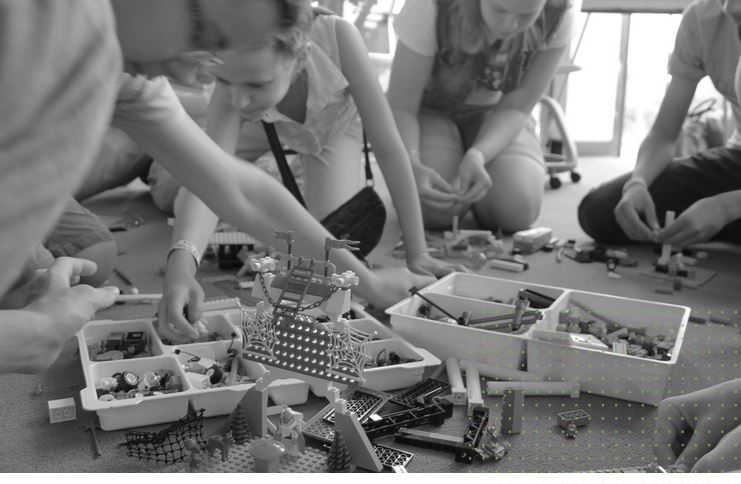
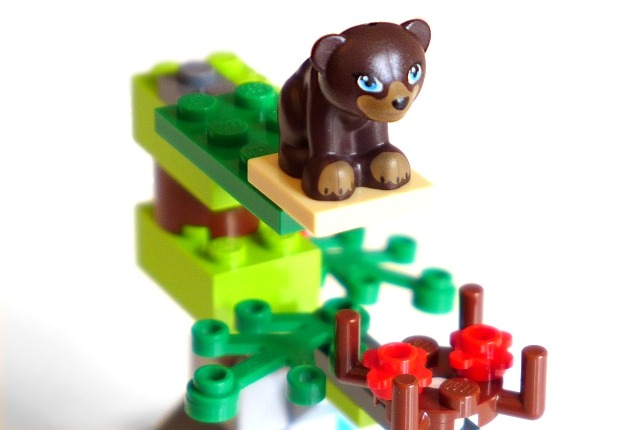
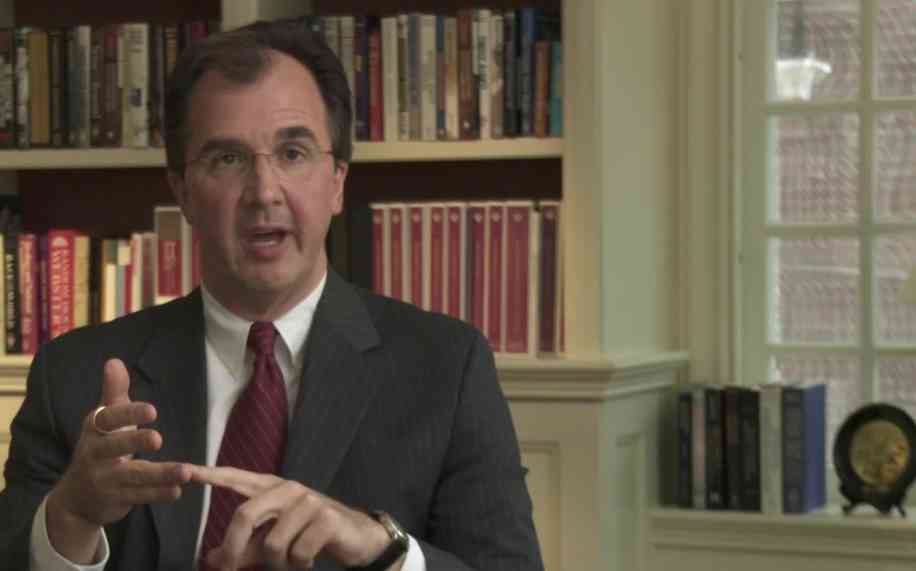
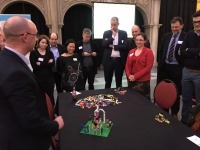
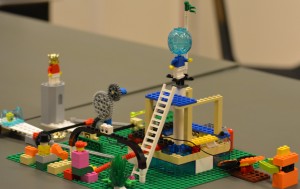
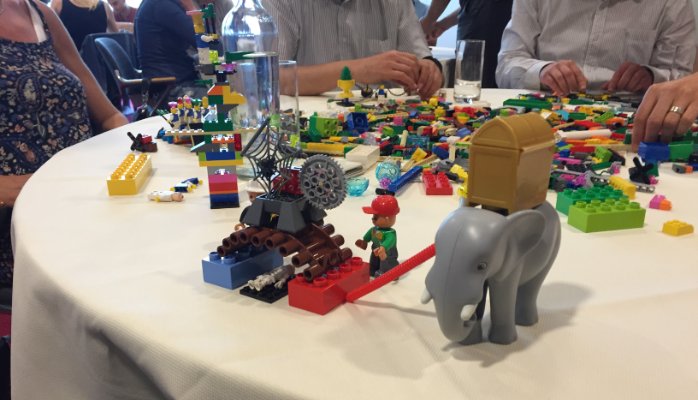




 Become a LEGO Serious Play facilitator - check one of the upcoming training events!
Become a LEGO Serious Play facilitator - check one of the upcoming training events!